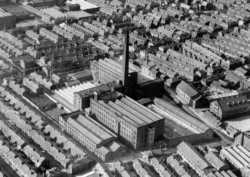In the spring of 1862, as the “Cotton Famine” wrought havoc on the town's main industry, thousands of people were put out of work. Local gentlemen and the Corporation proposed schemes for public works to relieve unemployment including the landscaping of Moor Park. In 1864 the land which now forms Miller Park was given to the town by Alderman Thomas Miller.
Despite these continuing problems of poor housing, conditions did improve from the 1870s with the construction of new, healthier housing and a boom in the cotton industry. The Public Health Act of 1875 required local authorities to implement building regulations or bye-laws, which insisted that each house should be self-contained with its own sanitation and water. This change in the design of housing complemented the public investment in sewers and water supply. At the same time, the income of most working class people started to rise at an unprecedented rate. In 1873, the price of food started to drop with the ready availability of cheap imports from across the Atlantic - and much of the drop in the cost of feeding a family was taken in higher spending on housing. In the last quarter of the nineteenth century, huge numbers of new bye-law houses were built in English cities: long rows of terraced housing, in grids of streets, easily cleaned and inspected.
 |
The popular view of a cotton town is exemplified by this view of Greenbank Mill, Plungington, in the mid-1920s. The imposing buildings of the mill itself (founded in 1836) tower above the regular streets of closely packed terraced housing. |